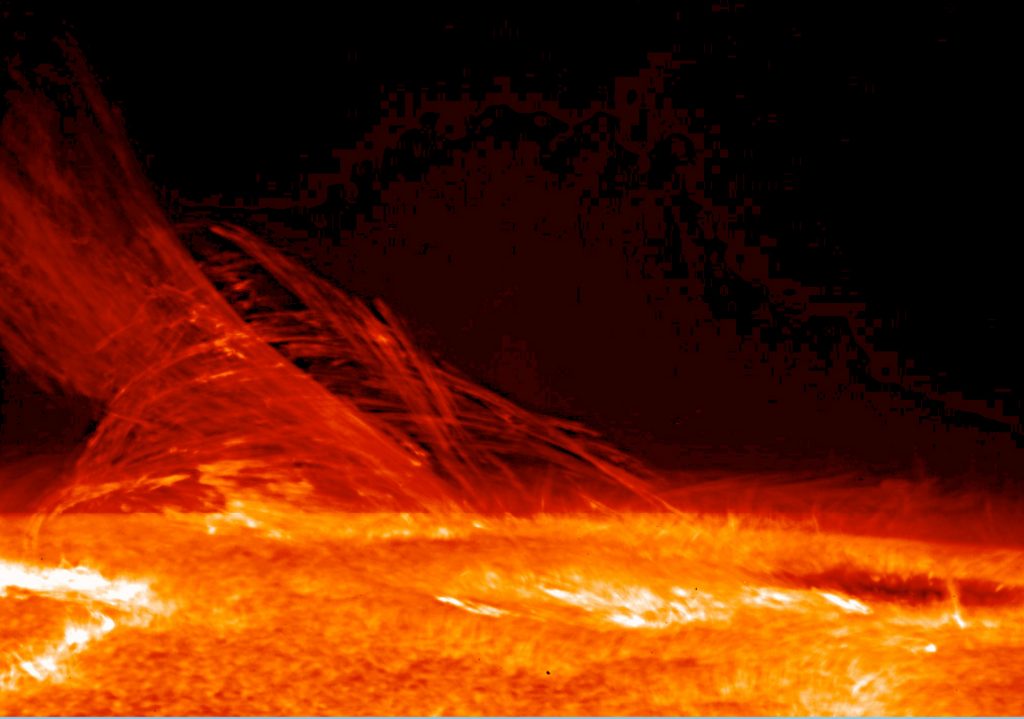According to a recent study published in Nature Astronomy, researchers have discovered web-like plasma structures in the Sun’s middle corona.
This study of researchers from the Southwest Research Institute (SwRI), NASA, and Max Planck Institute for Solar System Research (MPS) articulated their new observation technique in the study, which involves taking ultraviolet (U.V.) images of the middle corona.
“We’ve known since the 1950s about the outflow of the solar wind. As the solar wind evolves, it can drive space weather and affect things like power grids, satellites, and astronauts,” said SwRI Principal Scientist Dr. Dan Seaton in a press release- one of the study’s authors.
“We haven’t had observations like these before”
“The origins of the solar wind itself and its structure remain somewhat mysterious. While we have a basic understanding of processes, we haven’t had observations like these before, so we had to work with a gap in information,” he added.
Seaton came up with the idea of using a different instrument to identify new techniques to observe the Sun’s corona (GOES). This would be the Solar Ultraviolet Imager (SUVI) on NOAA’s Geostationary Operational Environmental Satellites (GOES).
Seaton and his colleagues discovered long, web-like plasma structures in the Sun’s middle corona.
“No one had monitored what the Sun’s corona was doing in U.V. at this height for that amount of time. We had no idea if it would work or what we would see,” he said.
“The results were very exciting. For the first time, we have high-quality observations that completely unite our observations of the Sun and the heliosphere as a single system.”
Future missions could include PUNCH (Polarimeter to Unify the Corona and Heliosphere), a NASA mission conducted by SwRI that will photograph the process by which the solar wind is formed from the Sun’s outer corona.
“Now that we can image the Sun’s middle corona, we can connect what PUNCH sees back to its origins and have a more complete view of how the solar wind interacts with the rest of the solar system,” he explained.
“Prior to these observations, very few people believed you could observe the middle corona to these distances in U.V. These studies have opened up a whole new approach to observing the corona on a large scale,” Seaton concluded.

